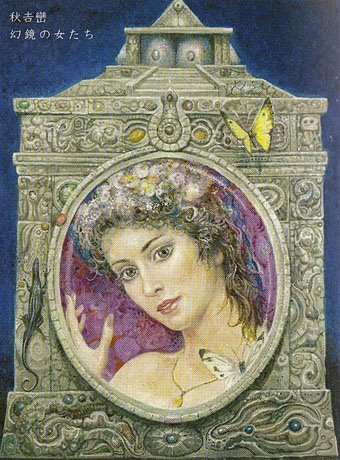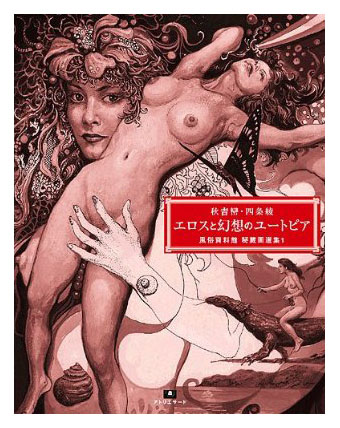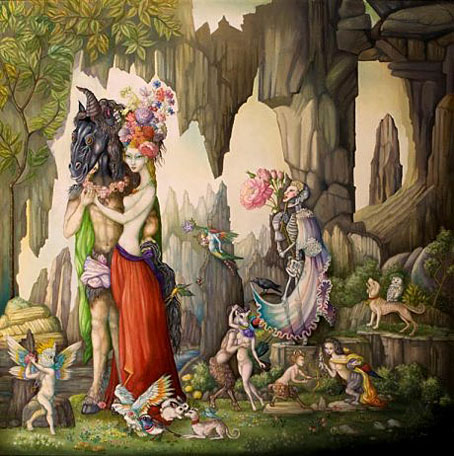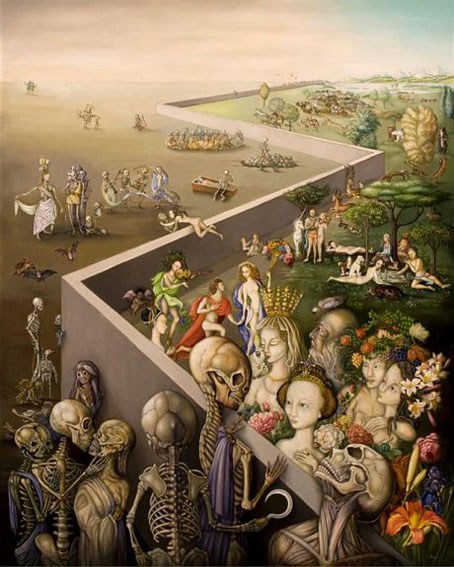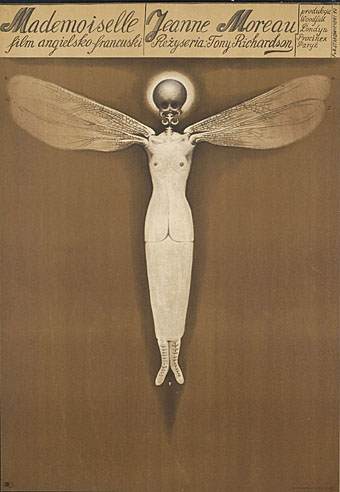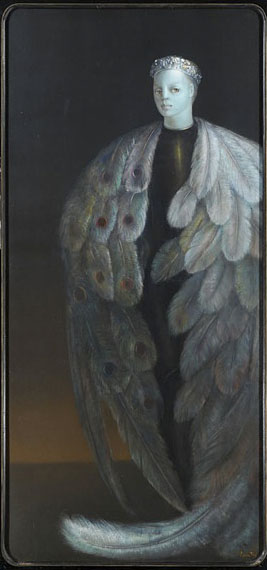
Rogomelec (1978) by Leonor Fini. Via.
• Moving Through Old Daylight: A recording of Mark Fisher, Jim Jupp and Julian House of Ghost Box Recordings and Iain Sinclair in conversation at the Roundhouse, Camden, London, 5 June 2010. Topics under discussion included Nigel Kneale, TC Lethbridge, John Foxx, BBC Radiophonic Workshop, alchemies of sound, the homogenisation of culture, imagining space and the impersistence of memory.
• The Surreal House, “a mysterious dwelling infused with subjectivity and desire” at the Barbican, London.
• Ars Homo Erotica at the National Museum of Warsaw. Related: “(Gothenburg) Museum stops exhibition about homosexuality in religion“.
• A lot of people still arrive here looking for art by Zack aka Oliver Frey. Bike Boy, 96 pages of Frey’s exuberantly homoerotic comic strips, is published in August by Bruno Gmünder.
• “EM Forster was a virgin until the age of thirty-nine, when he had his first ‘full’ sexual experience (a ‘hurried sucking off’, Wendy Moffat informs us) with a passing soldier on a beach in Alexandria.”
• JG Ballard’s archive is accepted by the British Library, or “saved for the nation” as they rather grandiloquently describe the process. Samples from the documents to be preserved at the BBC and the Guardian.
• Shades of Ballard’s singing sculptures, Sun Boxes is a solar-powered audio installation by Craig Colorusso. There’s more at Designboom.
• Nathalie visited the MAXXI, Rome’s new museum of contemporary art designed by Zaha Hadid.
• Stephen Pinker wants everyone to stop fretting over the alleged distractions of electronic media.
• “It basically comes from love”: John McLaughlin in conversation with Robert Fripp, 1982.
• More collections of print ephemera: Agence Eureka and Ephemera Magica.
• The Serpent and the Sword, an Alan Moore rarity from 1999.
• Gulliverovy Cesty (1968) at A Journey Round My Skull.
• Within the Without: a new Thombeau Tumblr.
• The Hidden Posters of Notting Hill Gate.
• The Letters of Sylvia Beach reviewed.
• It’s Kubrick Season in St Albans.
• Riot In Lagos (1980) by Ryuichi Sakamoto still sounds futuristic thirty years on.
